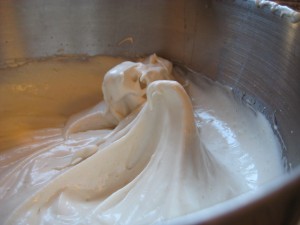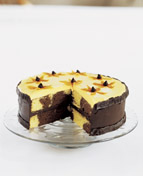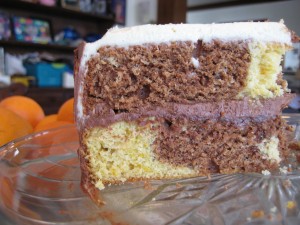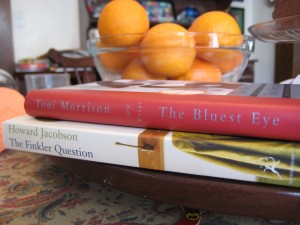This was my second read of Cormac McCarthy’s multiple award winner The Road, this month’s pick for the reading group I’ve started, of books with themes of myth and religion. Again, I found The Road a profound, moving, provocative story of the environment and human nature, told with Christian allegory. I flinched at times. At others I couldn’t stop reading until I found out what happened to the unnamed man and his son. And in the end I cried, then dried my tears and read through till the end, which some see as hopeful and others (like my husband, G. Grod) do not.
Yes, it was made into a movie, with Viggo Mortenson. It didn’t get great reviews; I don’t plan to see it. As for the book, though, there are spoilers ahead. If you haven’t yet read the book, I recommend it. Read it and come back to discuss.
A man and his young son are on the road, heading south several years after an unspecified environmental disaster:
An hour later they were on the road. He pushed the cart and both he and the boy carried knapsacks. In the knapsacks were essential things. In case they had to abandon the cart and make a run for it. Clamped to the handle of the cart was a chrome motorcycle mirror that he used to watch the road behind them. He shifted the pack higher on his shoulders and looked out over the wasted country. The road was empty. Below in the little valley the still gray serpentine of a river. Motionless and precise. Along the shore a burden of dead reeds. Are you okay? he said. The boy nodded. Then they set out along the blacktop in the gun metal light, shuffling through the ash, each the other’s world entire. (6)
That last phrase, “each the other’s world entire” continues to awe me with how much power five words can carry. McCarthy subtly creates the near future and its slight off-ness. He doesn’t use apostrophes for the word not: didnt, wouldnt, cant. Yet he does use it for other contractions: we’re, they’re, there’s. He’ll occasionally tweak a word, as when the man uses the binoculars to “glass” the road below, to create a feeling of difference.
The first time I read the novel, I was convinced there had been a nuclear holocaust. This time, noting the references to the distant sun, I suspect a natural disaster, something like the meteor some scientists theorize brought in the Ice Age and the end of the dinosaurs.
The man and his son stumble through a ruined landscape, scavenging for canned food and fuel from the past. This raises the question of hope versus futility. If hope, then is it a good thing, or was there a reason it was what remained in the box Pandora opened? Is hope an evil, like the rest of what escaped, or is it the antidote?
I choose to believe in hope. That’s what I read into the book, though I see how McCarthy skillfully left readers to draw their own conclusions in many instances, especially the end.














